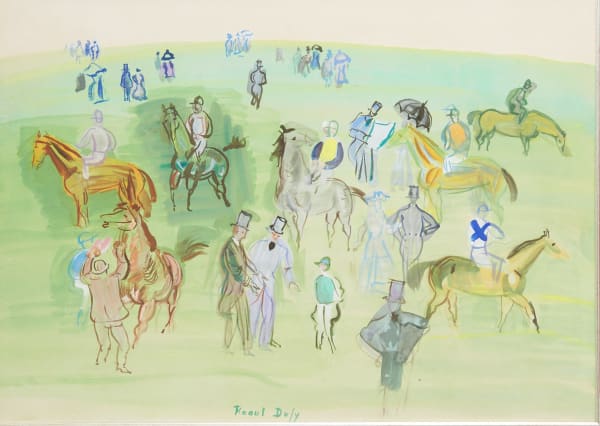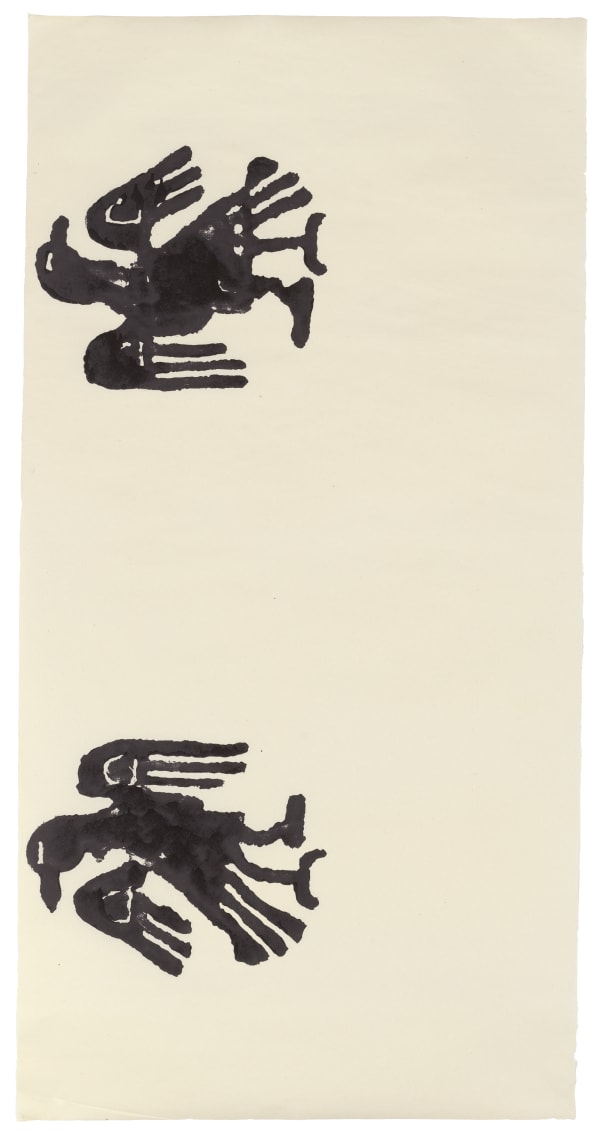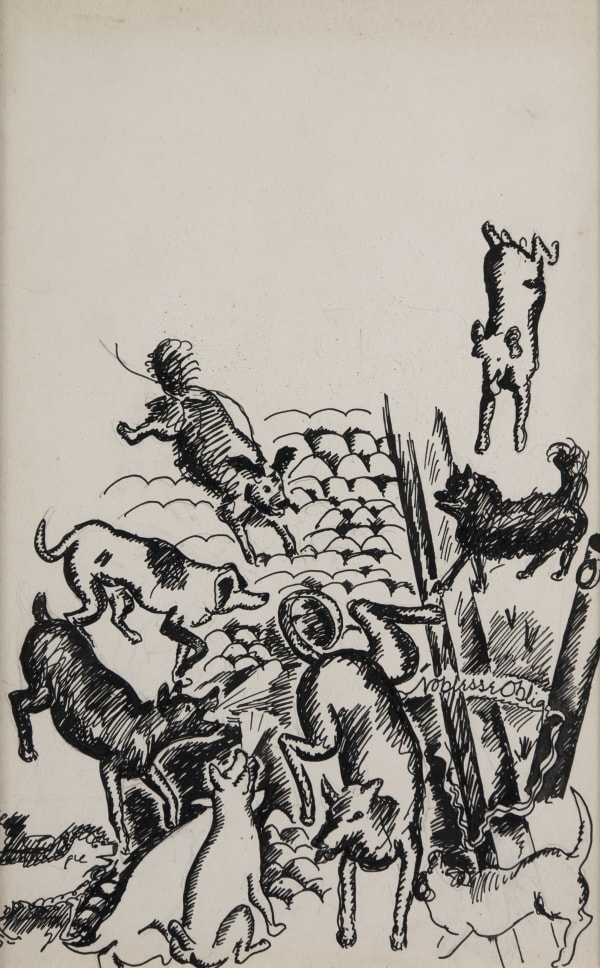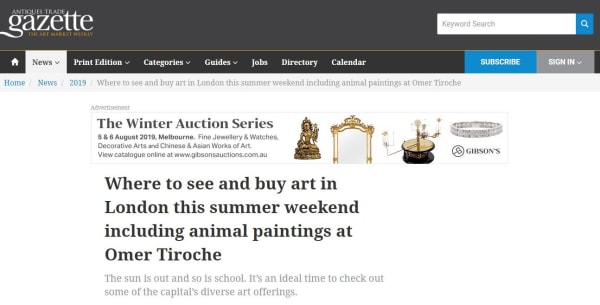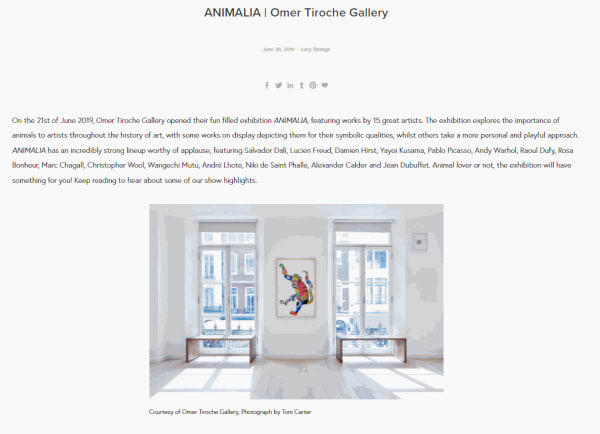ANIMALIA
Omer Tiroche Gallery is pleased to announce its forthcoming exhibition, ANIMALIA, which aims to explore and examine how prominent artists of the 20th and 21st centuries depicted and interpreted animals in their drawings. Through the works of fifteen leading Modern and Contemporary artists, the show illustrates how animals, whether used literally or symbolically, play a pivotal role in art history, as well as confirming our relentless association and allure with both domestic pets and wild beasts.
Our fascination with animals has been longstanding; the earliest known images to exist were found on the walls of prehistoric caves and depicted a variety of animals, many of which are now extinct. These cave paintings provided not only great historical insights into the discovery that animals were living amongst humans for millennia, but also that the detailed depictions illustrate man’s early and notable curiosity with creatures; an interest that still exists today.
Throughout history, animals have been portrayed in a variety of ways; as parables or mythical creatures in religious text; as symbolic references and even simply as household pets. The Ancient Egyptians revered animals to such a degree they depicted their gods with the heads of eagles, dogs, lions and crocodiles, assigning specific attributes to each animal. In Christianity, animals are often used as allegories in death; for example, the lamb was adopted as a symbol of Christ, reflecting his sacrifice for humanity. Griffins traditionally are depicted standing guard for the dead. Birds in flight symbolise the human soul and a fish is indicative of faith. However, animals are also used to reflect our own alluring qualities, just as a horse represents generosity and courage, whilst rabbits signify virtue. For centuries animals have been used in art to project the strengths and attributes of either the artist or their patron.
Often artists adopt well-known symbolisms as a tool to reflect themselves in their work; such is the case with Marc Chagall’s Double Profil, c.1938. Layered with symbolic references, this work features Chagall’s common motif of the goat that he frequently uses to represent himself. Traditionally, the goat is a Jewish symbol for the day of atonement. A further symbolic reference is the use of a herring for the brim of the hat, which is a nod towards the artist’s father who worked in a herring factory. In addition, the double profile is attributed to the Roman god Janus, who looks both at the past and the future. Perhaps Chagall is hinting towards the significant changes that are to come, with the imminent war being of grave concern to his life in Paris.
Just as Chagall used the recurring motif of animals to insert references and symbolism into his work, Picasso also used animals to execute several concepts of his own. Chevalier Et Picador Dans L’arène, 1951 depicts a subject matter that Picasso returned to throughout his career: the bullfight. At the age of nine, Picasso was taken to see his first bullfight; he was so fascinated with the spectacle that it became the focus of his very first painting that same year. To Picasso, the bull later developed to become a metaphor for life and death, the Spanish people, power, virility, fascism and, eventually, himself.
Although animals are frequently portrayed with human attributes, they are also credited as man’s best friend, cats and dogs are often depicted as the subject matter of a work and are celebrated to reflect the close bond between us and our pets, which is illustrated in Andy Warhol’s drawings of a cocker spaniel and his cat, Sam.
Lucian Freud’s Dead Bird on a Bamboo Table, 1944, is an example of a meditation on technique and a profound homage to nature, a sense of which has spanned his entire career. Freud regarded the depiction of animals with the same importance as he did human portraits. At the time he created this work, Freud was heavily influenced by German Renaissance painter Albrecht Dürer, a master of observational art.
Featured artists: Rosa Bonheur | Alexander Calder | Marc Chagall | Salvador Dalí | Jean Dubuffet | Raoul Dufy | Lucian Freud | Damien Hirst | Yayoi Kusama | André Lhote | Wangechi Mutu | Niki de Saint Phalle | Pablo Picasso | Andy Warhol | Christopher Wool
-
 Jean DubuffetPalmeraie aux oiseaux et scorpions, 1949Watercolour, pen, and ink on paper21 x 26 cm.
Jean DubuffetPalmeraie aux oiseaux et scorpions, 1949Watercolour, pen, and ink on paper21 x 26 cm.
8 ¼ x 10 ¼ in.£ 35,000.00 -
 Raoul DufyChevaux et Jockeys sur la Pelouse, 1935-40Gouache and watercolour on paper48.8 x 64.7 cm.
Raoul DufyChevaux et Jockeys sur la Pelouse, 1935-40Gouache and watercolour on paper48.8 x 64.7 cm.
19 3/16 x 25 ½ in.$ 200,000.00 -
 Damien HirstUntitled, 2006Pencil, fluorescent marker pen, felt-tip pen and roller-ball pen on paper.30.5 x 20.3 cm.
Damien HirstUntitled, 2006Pencil, fluorescent marker pen, felt-tip pen and roller-ball pen on paper.30.5 x 20.3 cm.
12 x 8 in.$ 23,400.00 -
 Yayoi Kusama, Night, 1981
Yayoi Kusama, Night, 1981
-
 Wangechi MutuUntitled, 2004Watercolour and printed paper collage on Mylar65.4 x 67.9 cm.
Wangechi MutuUntitled, 2004Watercolour and printed paper collage on Mylar65.4 x 67.9 cm.
25 ¾ x 26 ¾ in.$ 60,000.00 -
 Niki de Saint Phalle, Monkey with Child, 1995
Niki de Saint Phalle, Monkey with Child, 1995 -
 Christopher WoolUntitled, 1990Alkyd on rice paper189 x 95 cm.
Christopher WoolUntitled, 1990Alkyd on rice paper189 x 95 cm.
74 7/16 x 37 ⅜ in.£ 145,000.00 -
 Alexander CalderRunt Piddling on a Tree, 1925Ink on paper24.8 x 16.5 cm.
Alexander CalderRunt Piddling on a Tree, 1925Ink on paper24.8 x 16.5 cm.
9 ¾ x 6 ½ in.$ 7,000.00










